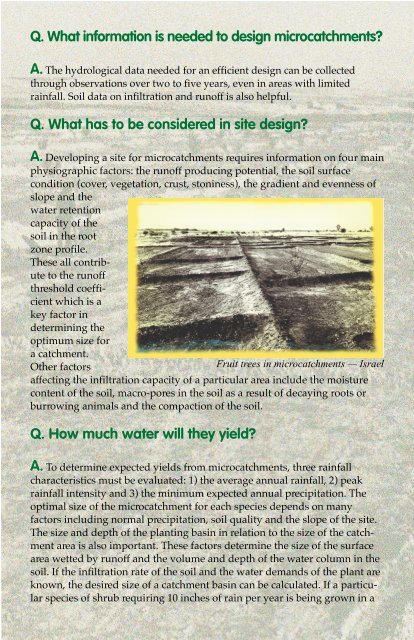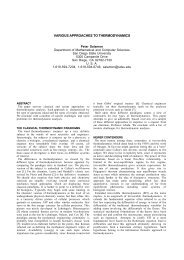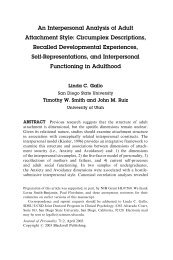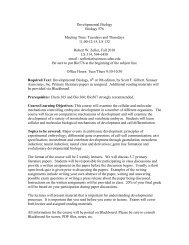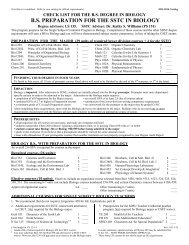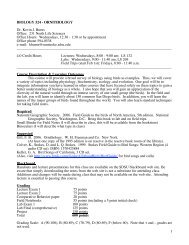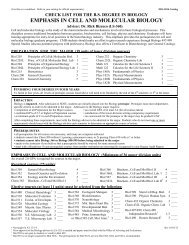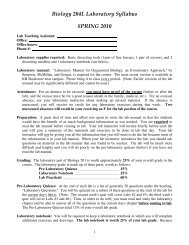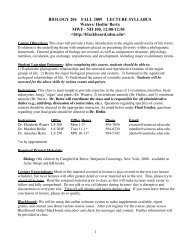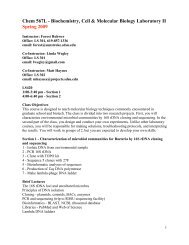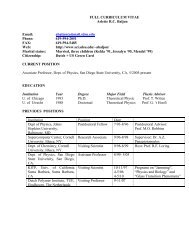Microcatchment Water Harvesting for Desert Revegetation
Microcatchment Water Harvesting for Desert Revegetation
Microcatchment Water Harvesting for Desert Revegetation
You also want an ePaper? Increase the reach of your titles
YUMPU automatically turns print PDFs into web optimized ePapers that Google loves.
Q. What in<strong>for</strong>mation is needed to design microcatchments?<br />
A. The hydrological data needed <strong>for</strong> an efficient design can be collected<br />
through observations over two to five years, even in areas with limited<br />
rainfall. Soil data on infiltration and runoff is also helpful.<br />
Q. What has to be considered in site design?<br />
A. Developing a site <strong>for</strong> microcatchments requires in<strong>for</strong>mation on four main<br />
physiographic factors: the runoff producing potential, the soil surface<br />
condition (cover, vegetation, crust, stoniness), the gradient and evenness of<br />
slope and the<br />
water retention<br />
capacity of the<br />
soil in the root<br />
zone profile.<br />
These all contribute<br />
to the runoff<br />
threshold coefficient<br />
which is a<br />
key factor in<br />
determining the<br />
optimum size <strong>for</strong><br />
a catchment.<br />
Other factors<br />
Fruit trees in microcatchments — Israel<br />
affecting the infiltration capacity of a particular area include the moisture<br />
content of the soil, macro-pores in the soil as a result of decaying roots or<br />
burrowing animals and the compaction of the soil.<br />
Q. How much water will they yield?<br />
A. To determine expected yields from microcatchments, three rainfall<br />
characteristics must be evaluated: 1) the average annual rainfall, 2) peak<br />
rainfall intensity and 3) the minimum expected annual precipitation. The<br />
optimal size of the microcatchment <strong>for</strong> each species depends on many<br />
factors including normal precipitation, soil quality and the slope of the site.<br />
The size and depth of the planting basin in relation to the size of the catchment<br />
area is also important. These factors determine the size of the surface<br />
area wetted by runoff and the volume and depth of the water column in the<br />
soil. If the infiltration rate of the soil and the water demands of the plant are<br />
known, the desired size of a catchment basin can be calculated. If a particular<br />
species of shrub requiring 10 inches of rain per year is being grown in a


